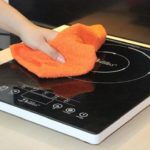Have your pots and pans seen better days? Over time, cookware can become stained and discolored, especially if you cook colorful or heavily spiced dishes. But fear not! There’s a nifty trick to clean them without resorting to harsh chemical cleaners.
Recently, a Facebook group called “YEU BEP (Esheep Kitchen family)” shared a clever hack using leftover cooking oil to clean pots and pans, leaving them sparkling clean. Intrigued? Let’s dive in and explore this handy tip!
1 What You’ll Need
- Leftover cooking oil
- Paper towels
- A stained pot or pan
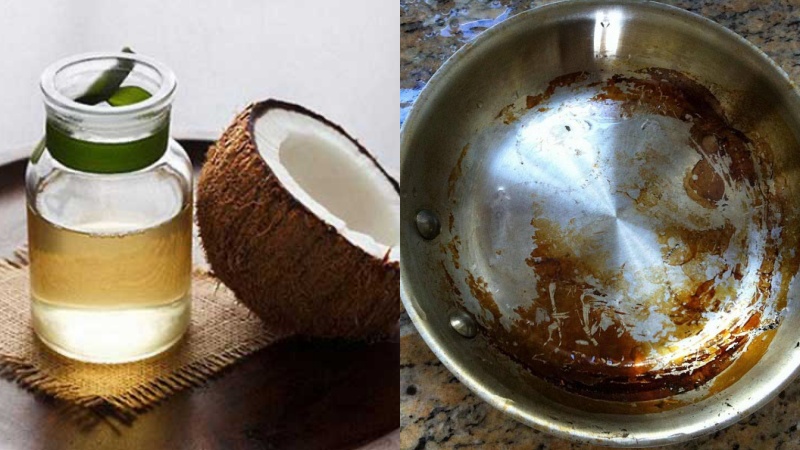 Gather Your Supplies
Gather Your Supplies
2 Step-by-Step Guide
Step 1 Filter the Oil
Start by creating a funnel using multiple layers of paper towels. Place this funnel into a container and pour the leftover oil through it, filtering the oil twice to ensure it’s clear and free of any debris.
 Filter the Oil Twice
Filter the Oil Twice
Step 2 Remove Stains from the Pot or Pan
Dip 2-3 paper towels into the filtered oil and apply it to the stained areas of your cookware. Rub the oil onto the stains as you would normally clean your pots and pans, continuing until the stains disappear.
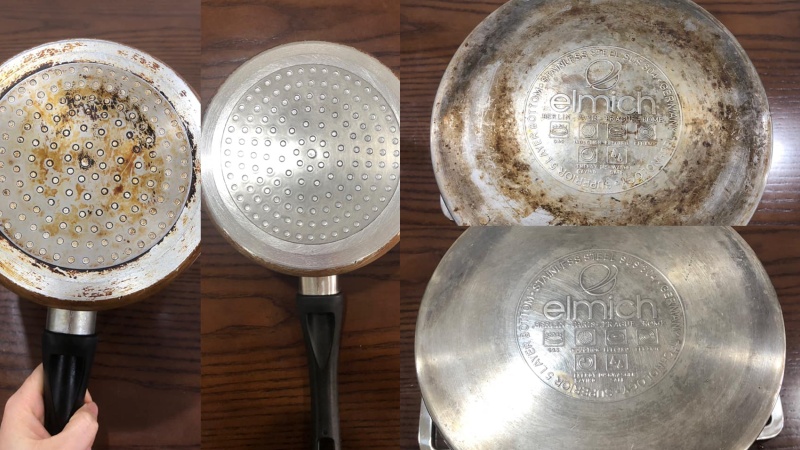 Remove Stains with Oil-Soaked Paper Towels
Remove Stains with Oil-Soaked Paper Towels
Notes
– For stubborn, long-standing stains, you can add a bit of vinegar, lemon juice, or baking soda to the oil. This will create a mildly abrasive mixture to tackle tougher stains.
– This method works not only on pots and pans but also on any kitchenware with yellow stains, such as sinks, bowls, and even bathroom fixtures like tubs and toilets.
– For extremely stubborn stains or rust, use a ball of aluminum foil to gently scrub the surface. This will add extra shine and remove any remaining stains.
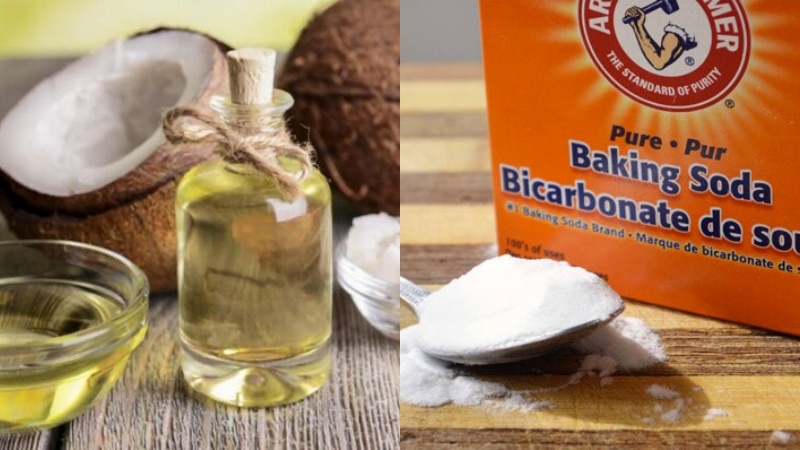 Add Baking Soda to the Oil for Extra Cleaning Power
Add Baking Soda to the Oil for Extra Cleaning Power
Step 3 Rinse Away the Oil
Once your cookware is stain-free, rinse it thoroughly with either enzymatic soap derived from the Chinese quince or regular dish soap. This will remove any residual oil, leaving your pots and pans clean and ready for use.
Tips
– If you’ve used oil to clean other surfaces like your stove or sink, you can wipe them down with a specialized cleaning product or simply use dry paper towels.
– Alternatively, you can first rinse your cookware with hot water and then wash it with dish soap to save time and effort.
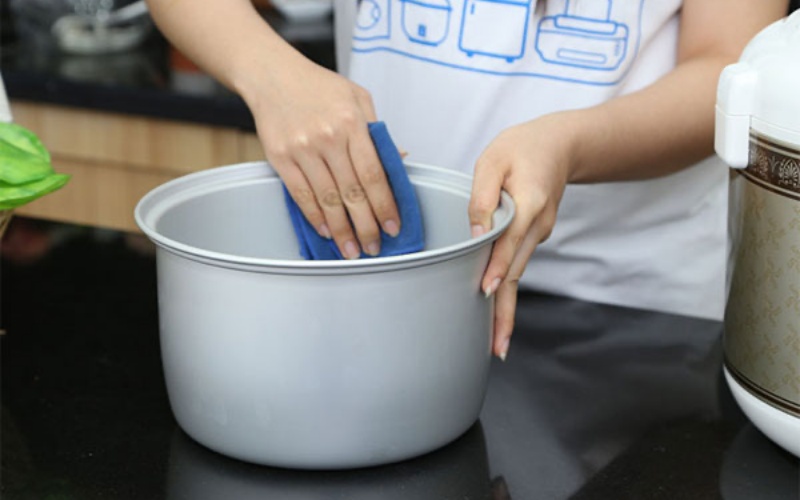 Rinse Away the Oil with Enzymatic Soap or Dish Soap
Rinse Away the Oil with Enzymatic Soap or Dish Soap
3 Tips to Prevent Stains
Don’t Leave Food in Pots and Pans Overnight
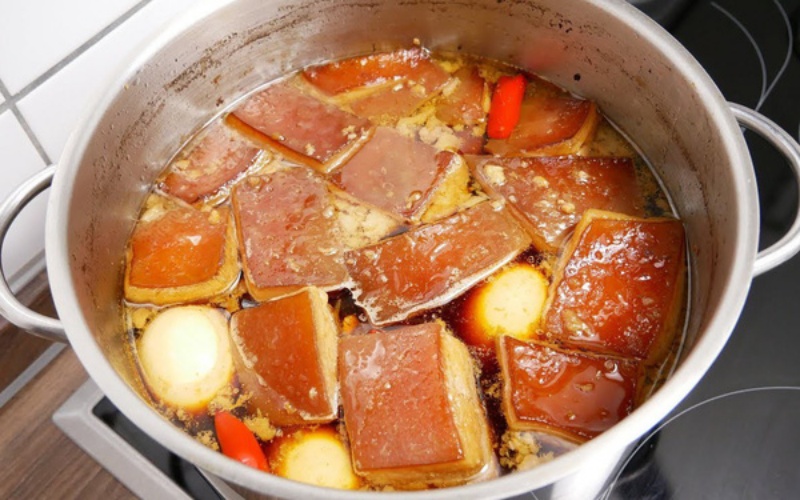 Avoid Leaving Food in Cookware Overnight
Avoid Leaving Food in Cookware Overnight
It’s important to avoid leaving food in your pots and pans overnight, especially dishes high in fat, salt, or acid, such as those containing vinegar or lemon juice. Not only is this unhygienic and potentially harmful to your health, but it can also reduce the lifespan of your cookware.
Make it a habit to clean your cookware soon after cooking to maintain its shine and durability.
Adjust the Heat While Cooking
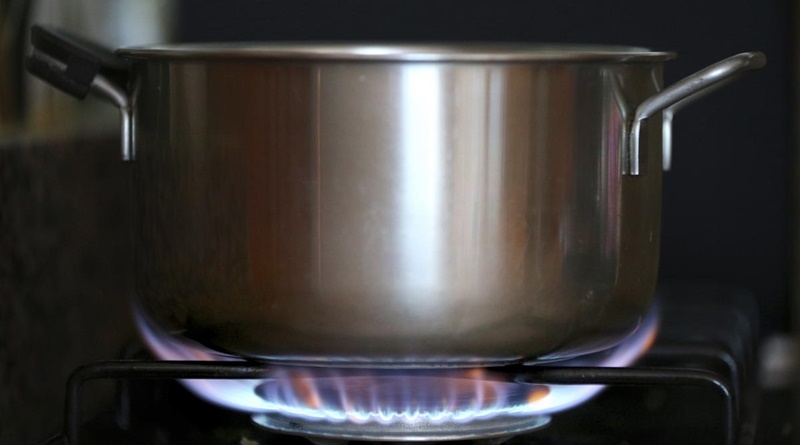 Adjust the Heat for Optimal Cooking
Adjust the Heat for Optimal Cooking
Be mindful of the heat when cooking. Avoid turning the heat up too high before adding oil, as this can cause your pots and pans to warp, discolor, and deteriorate faster. Instead, aim for a gentle, even heat across the bottom of your cookware.
Clean Your Cookware Properly
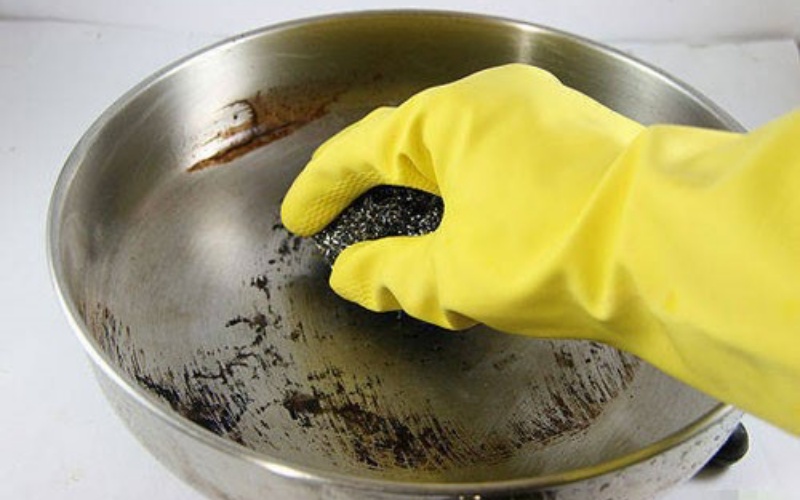 Clean Your Cookware Gently and Effectively
Clean Your Cookware Gently and Effectively
Avoid using harsh abrasives like sandpaper or metal scouring pads on your cookware. These can scratch and damage the surface, reducing its lifespan and aesthetic appeal. Additionally, never pour cold water into a hot pot or pan, especially if it’s made of stainless steel, as this can cause thermal shock and lead to unsightly yellow stains.
Properly Store Your Cookware
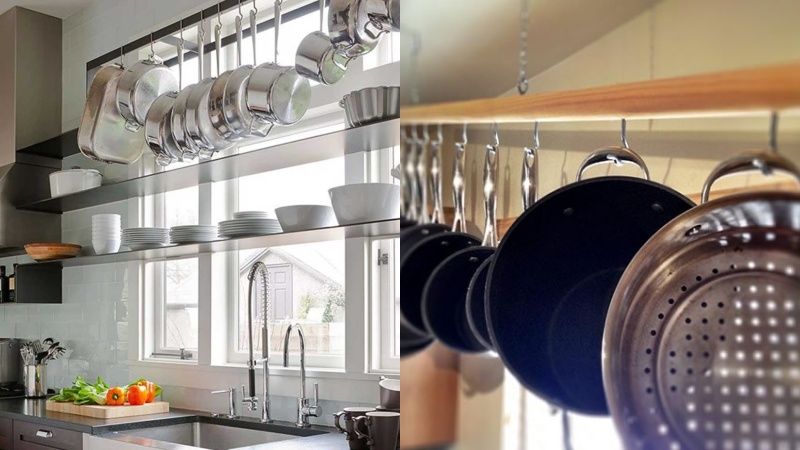 Store Your Cookware Properly
Store Your Cookware Properly
After washing your pots and pans, dry them thoroughly with a clean cloth to prevent water spots and mineral buildup. Then, store your cookware in a dry place, ensuring they don’t stack or rub against each other to avoid scratches and maintain their pristine condition.
There you have it! A clever oil-based cleaning trick shared by Nguyễn Ngọc Trà My in the “YEU BEP (Esheep Kitchen family)” group. If you’re dealing with stained or rusty cookware, give this method a try. Happy cleaning!
Tips to Remove Stains from Clothes After Washing
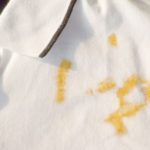 Stains from Clothes After Washing’>
Stains from Clothes After Washing’>No need to despair if your colorful clothes end up with color stains after being washed – Dien May GREEN has got you covered with useful strategies to combat this problem.




























